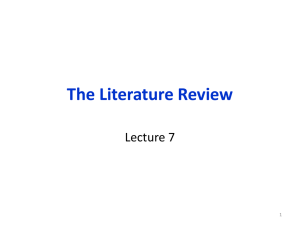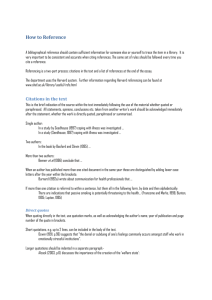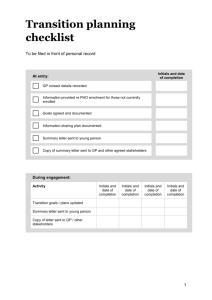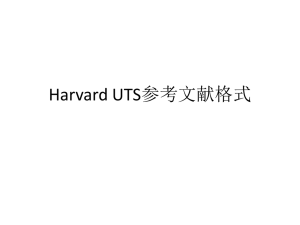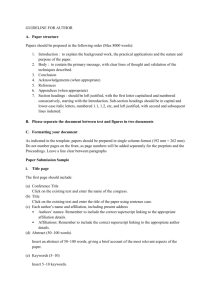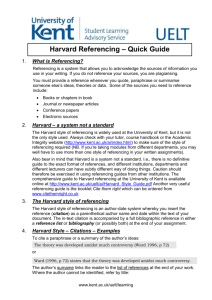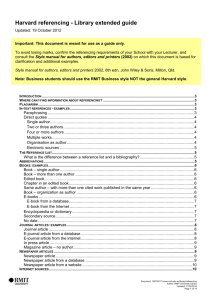Journal Layout_EN - Stamford International University
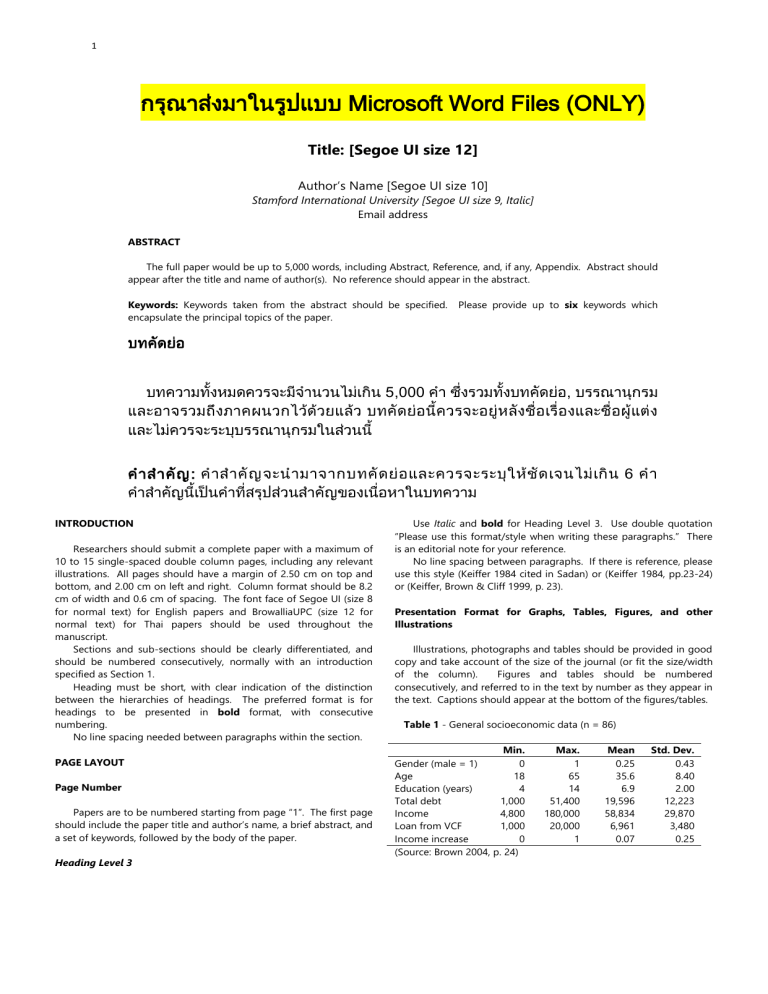
1
กรุณาส่งมาในรูปแบบ Microsoft Word Files (ONLY)
Title: [Segoe UI size 12]
Author’s Name [Segoe UI size 10]
Stamford International University [Segoe UI size 9, Italic]
Email address
ABSTRACT
The full paper would be up to 5,000 words, including Abstract, Reference, and, if any, Appendix. Abstract should appear after the title and name of author(s). No reference should appear in the abstract.
Keywords: Keywords taken from the abstract should be specified. Please provide up to six keywords which encapsulate the principal topics of the paper.
บทคัดย่อ
บทความทั้งหมดควรจะมีจ านวนไม่เกิน 5,000 ค า ซึ่งรวมทั้งบทคัดย่อ, บรรณานุกรม
และอาจรวมถึงภาคผนวกไว้ด้วยแล้ว บทคัดย่อนี้ควรจะอยู่หลังชื่อเรื่องและชื่อผู้แต่ง
และไม่ควรจะระบุบรรณานุกรมในส่วนนี้
ค าส าคัญ: ค าส าคัญจะน ามาจากบทคัดย่อและควรจะระบุให้ชัดเจนไม่เกิน 6 ค า
ค าส าคัญนี้เป็นค าที่สรุปส่วนส าคัญของเนื่อหาในบทความ
INTRODUCTION
Researchers should submit a complete paper with a maximum of
10 to 15 single-spaced double column pages, including any relevant illustrations. All pages should have a margin of 2.50 cm on top and bottom, and 2.00 cm on left and right. Column format should be 8.2 cm of width and 0.6 cm of spacing. The font face of Segoe UI (size 8 for normal text) for English papers and BrowalliaUPC (size 12 for normal text) for Thai papers should be used throughout the manuscript.
Sections and sub-sections should be clearly differentiated, and should be numbered consecutively, normally with an introduction specified as Section 1.
Heading must be short, with clear indication of the distinction between the hierarchies of headings. The preferred format is for headings to be presented in bold format, with consecutive numbering.
No line spacing needed between paragraphs within the section.
PAGE LAYOUT
Page Number
Papers are to be numbered starting from page “1”. The first page should include the paper title and author’s name, a brief abstract, and a set of keywords, followed by the body of the paper.
Heading Level 3
Use Italic and bold for Heading Level 3. Use double quotation
“Please use this format/style when writing these paragraphs.” There is an editorial note for your reference.
No line spacing between paragraphs. If there is reference, please use this style (Keiffer 1984 cited in Sadan) or (Keiffer 1984, pp.23-24) or (Keiffer, Brown & Cliff 1999, p. 23).
Presentation Format for Graphs, Tables, Figures, and other
Illustrations
Illustrations, photographs and tables should be provided in good copy and take account of the size of the journal (or fit the size/width of the column). Figures and tables should be numbered consecutively, and referred to in the text by number as they appear in the text. Captions should appear at the bottom of the figures/tables.
Table 1 - General socioeconomic data (n = 86)
Gender (male = 1)
Age
Education (years)
Total debt
Income
Loan from VCF
Income increase
Min.
18
(Source: Brown 2004, p. 24)
0
4
Max.
1
65
14
1,000 51,400
4,800 180,000
1,000
0
20,000
1
Mean Std. Dev.
0.25 0.43
35.6
6.9
8.40
2.00
19,596
58,834
6,961
0.07
12,223
29,870
3,480
0.25
2
Figure 1 - cPanel window
(Source: Control Panel URL: http://174.122.68.206:2082 )
Table 2 - Self-governance empowerment items results from principles components analysis showing factor loadings (n=100)
Self-governance empowerment items
Factor loading
I. Social Confidence (SOCON)
1. help received
2. cooperation received
3. confidence in helping family
4. leadership ability
5. contribution to the community
.916
.883
.848
.734
.689
Eigen value = 4.051
Cum. % of var. 27.008
=
II. Social and political participation (SOPAR)
1. management ability
2. political participation
3. community activity participation
.833
.825
.626
Eigen value = 2.950
III. Dependency (DEP)
1. expectation of more loans
2. desire for government help in repayment
3. need for delay in payment
Cum. % of var.
=
.885
.799
46.673
.543
Eigen value = 1.752
Cum. % of var.
=
58.355
IV. Voice (VOICE)
1. feeling of unity in participation
2. more expression of thoughts
.850
.826
Eigen value = 1.265
Cum. % of var.
=
66.785
V. Knowledge (KNOW)
1. increase in knowledge
2. confidence in contacting officials
.772
.724
Eigen value = 1.144
Cum. % of var. 74.414
=
Mathematical Expressions
Mathematical expression or Greek or other symbols should be printed clearly with sample spacing. Any unusual characteristics should be indicated on a separate page. 𝑛
(𝑥 + 𝑎) 𝑛 = ∑ ( 𝑘=0 𝑛 𝑘
) 𝑥 𝑘 𝑎 𝑛−𝑘
Equation 1: Binomial Theorem
Quotations
Use double quotation marks and single quotation marks for quotations within quotations. For example,
….The theoretical processes were clearly observable, for in the culmination period Smith (1992) observed "it was obvious that the conflict had reached a pitch when the leader of the opposition said 'it is not possible to negotiate further on this matter'"…
Quotes longer than thirty words are indented, and are one font size smaller (i.e. size 7). For example,
The second objective is the explanation of the phenomenon, and this requires knowledge of why the phenomenon exists or what causes it. Therefore, we must be able to identify the antecedent conditions that result in the occurrence of the phenomenon… separation anxiety was frequency of handling by adults other than the parents.
Short Form or Abbreviation
Indicate dates as follows: 1 July 2012, 12 August 2010.
When specific, both names and nouns should be capitalised, but not when generalised; for example, the European Community,
Yugoslavia, the Commonwealth of Independent State, European community. No full stops are used between letters, e.g. NATO, EC, IS,
USA, UK.
Footnotes/Endnotes
Footnotes should appear as Endnotes accumulated at the end of the paper as notes. For example,
...’Doing the necessary detective work can be tedious and timeconsuming, but scouting competitors well enough to anticipate their next moves allows managers to prepare effective countermoves and to take rivals’ probable actions into account in crafting their own offensive strategies.
1 ’…
HARVARD REFERENCING STYLE
You always use sources to enhance your credibility and place your work in its proper context. A referencing system can help you to understand copyright and avoid plagiarism. Referencing is a standard practice for acknowledging information sources in academic writing. You, therefore, need to provide sufficient detail of all sources of information and ideas included in your writing by referencing.
References to other publications must be in Harvard style and carefully checked for completeness, accuracy and consistency. This is very important in an electronic environment because it enables your readers to exploit the Reference Linking facility on the database and link back to the work you have cited through CrossRef.
Single or Multiple Authors
You should cite publications in the text. If there is a single author, using the family name of the author. For example,
1 For an excellent discussion of an effective methodology that may be used to predict rivals’ next moves, see Kevin PC & Horn J 2009, ‘Predicting Your
Competitor’s Reaction,’ Harvard Business Review, vol. 87, no. 4, pp. 90-97.
3
…without providing insights into the critical issues and challenges they confront (Valentin 2001).
When there are two or three authors for a reference, include all their family names in the in-text reference. For example,
…strategic management of stakeholders and sponsors has been the subject of several case studies (Andersson & Getz 2007;
Rowley and Williams 2008)…
Sexual appeals are defined as ‘brand information messages in … verbal elements, or both’ (Reichert, Heckler & Jackson 2001, p.
14).
At the end of the paper, a reference list in alphabetical order should be supplied.
FORMAT OF BIBLIOGRAPHIES
Samples of Harvard Referencing Style in English and Thai are available as appendix of this guideline. Stamford Journal and
Stamford Graduate School Journal use Harvard author-name
Referencing style that is generally applied in Australian universities.
For books: family name, initials (Year), Title of book, Publisher,
Place of publication.
Harrow, R 2005, No place to hide, Simon & Schuster, New York.
For book chapter(s): family name, initials (Year), ‘Chapter title’, [in]
Editor’s initials family name (eds.), Title of book, Publisher, Place of publication, Page number(s).
Calabrese, FA 2005, ‘The early pathways: theory to practice: a continuum", in M Stankosky (ed.), Creating the discipline of
knowledge management, Elsevier, New York, pp. 15-20.
For journal(s): family name, initials (Year of publication), ‘Title of article’, Title of Journal, Volume, Issue or number, Page number(s).
Capizzi, MT & Ferguson R 2005, ‘Loyalty trends for the twentyfirst century’, Journal of Consumer Marketing, vol. 22, no. 2, pp.
72-80.
For published conference proceedings: family name, initials
(Year of publication), ‘Title of paper’, [in] Editor (if applicable), Title of
published proceeding which may include place held and date(s),
Publisher, Place of publication, Page number(s).
Jakkilinki, R, Georgievski, M & Sharda, N 2007, ‘Connecting destinations with an ontology-based e-tourism planner’, in
Information and communication technologies in tourism 2007:
Proceedings of the International Conference, Ljubljana, Slovenia,
2007, Springer-Verlag, Vienna, pp. 12-32.
For unpublished conference proceedings: family name, initials
(Year of publication), ‘Title of paper’, [paper presented to] Name of conference, Place of conference, Date of conference, [viewed] date,
<URL (if freely available on the internet)>.
Aumueller, D 2005, ‘Semantic authoring and retrieval within a wiki’, paper presented to the European Semantic Web conference
(ESWC), Heraklion, Crete, 29 May - 1 June, viewed 20 February
2007, <http://dbs.uni-leipzig.de/file/aumueller05wiksar.pdf>.
For working papers: family name, initials (Year of publication),
‘Title of article’, Working paper [number if available], Institution or organization, Place of organization, date viewed.
Moizer, P 2003, ‘How published academic research can inform policy decisions: the case of mandatory rotation of audit appointments’, Working paper, Leeds University Business School,
University of Leeds, Leeds, 28 March.
For encyclopedia entries (with no author or editor): Title of
Encyclopedia (Year of publication), ‘Title of entry’, Volume, Edition,
Title of Encyclopedia, Publisher, Place of publication, Page number(s).
Encyclopaedia Britannica (1926), ‘Psychology of culture contact’, vol. 1, 13th edn, Encyclopaedia Britannica, London and New York,
NY, pp. 765-71.
(For authored entries please refer to book chapter guidelines above.)
For newspaper articles (authored): family name, initials (Year of publication), ‘Title of article’, Name of newspaper, Date of publication,
Page number(s).
Smith, A 2008, ‘Money for old rope’, Daily News, 21 January, pp. 1,
3-4.
For newspaper articles (non-authored): If a newspaper article has no author, it is mostly likely not appropriate to use in academic.
For electronic source: if available online the full URL should be supplied at the end of the reference, as well as a date that the resource was accessed.
Castle, B 2005, Introduction to web services for remote portlets, viewed 12 November 2007, <http://www-
128.ibm.com/developerworks /library/ws-wsrp/>.
The Association of Thai Travel Agents 2012, The Association of
Thai Travel Agents, Thailand, viewed 16 July 2012,
<http://www.atta.or.th/ ATTAUI.aspx>.
Anglia Ruskin University 2012, Guide to the Harvard Style of
Referencing, viewed 16 July 2012, <http://libweb.anglia.ac.uk/ referencing/files/Harvard_referencing_2011.pdf>.
Standalone URLs, i.e. without an author or date, should be included either within parentheses, within the main text, or preferably set as a note. Roman numeral within square brackets within text followed by the full URL address at the end of the paper.
The references are listed alphabetically at the end of the manuscript. Journal titles should not be abbreviated. Titles of books, newspapers, or journals appearing in the text should be italicised.
Journal volume, numbers and pages should be given in order.
Translations of original titles should appear in parentheses.
OTHERS
Manuscripts will normally be linguistically corrected and edited before printing. Proofs will normally be sent to the author once; the author is expected to read them carefully and return them promptly to the Editorial Office.
The copyright of all material published is vested in the journal.
The author must complete and return the copyright form enclosed with proofs.
4
The author is requested to retain a complete copy of the manuscript. The editors will be glad to comment on the synopses of the proposed contributions.
A brief autobiographical note should be supplied including:
• Full name
• Affiliation
• E-mail address
• Full international contact details
• Brief professional biography
NB: This information should be provided on a separate sheet.
Submission should be sent electronically via email to stiujournal@stamford.edu
.
SAMPLE FORMAT OF BIBLIOGRAPHIES SECTION
Castle, B 2005, Introduction to web services for remote portlets, viewed
1 2 N o v e m b e r 2 0 0 7 , < h t t p : / / w w w - 1 2 8 . i b m . c o m / developerworks/library/ws-wsrp/>.
Goldberg, N 2005, Measuring the impact of microfinance: Taking stock
o f w h a t w e k n o w , v i e w e d 3 M a r c h 2 0 0 7 ,
<http://www.microfinancegateway.org/files/30153_file_30153. pdf>.
Smith, A 2008, ‘Money for old rope’, Daily News, 21 January, pp. 1, 3-
4.
ปรัชญนันท์ นิลสุข . (2552). เว็บบล็อก : เทคโนโลยีเพื่อการจัดการความรู้ .
พัฒนาเทคนิคศึกษา . 21(69), pp. 18-20.
